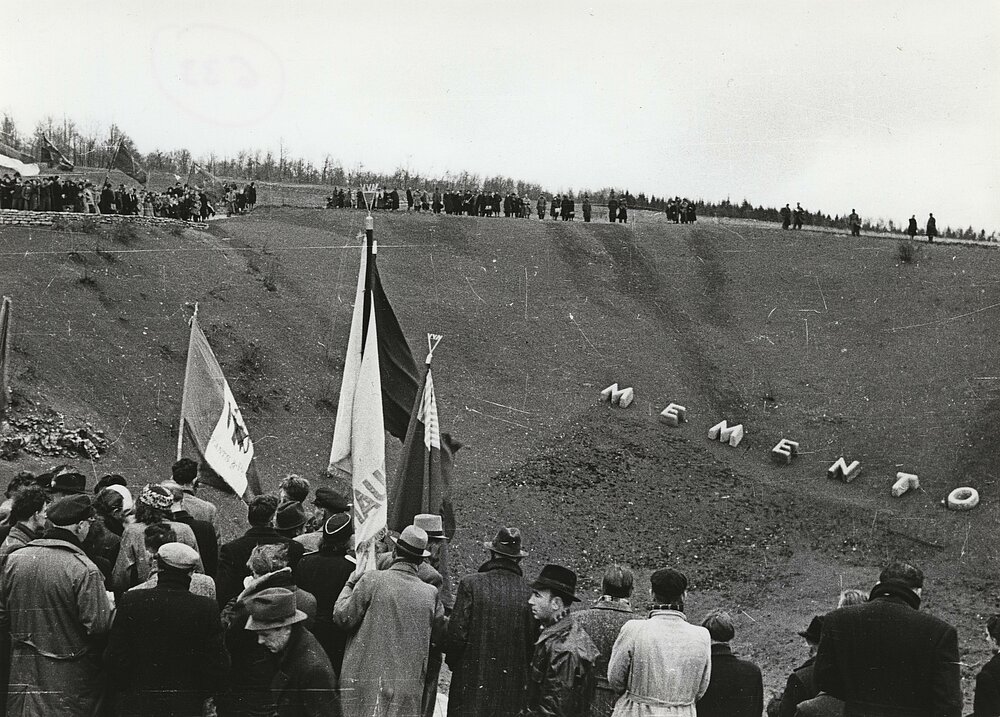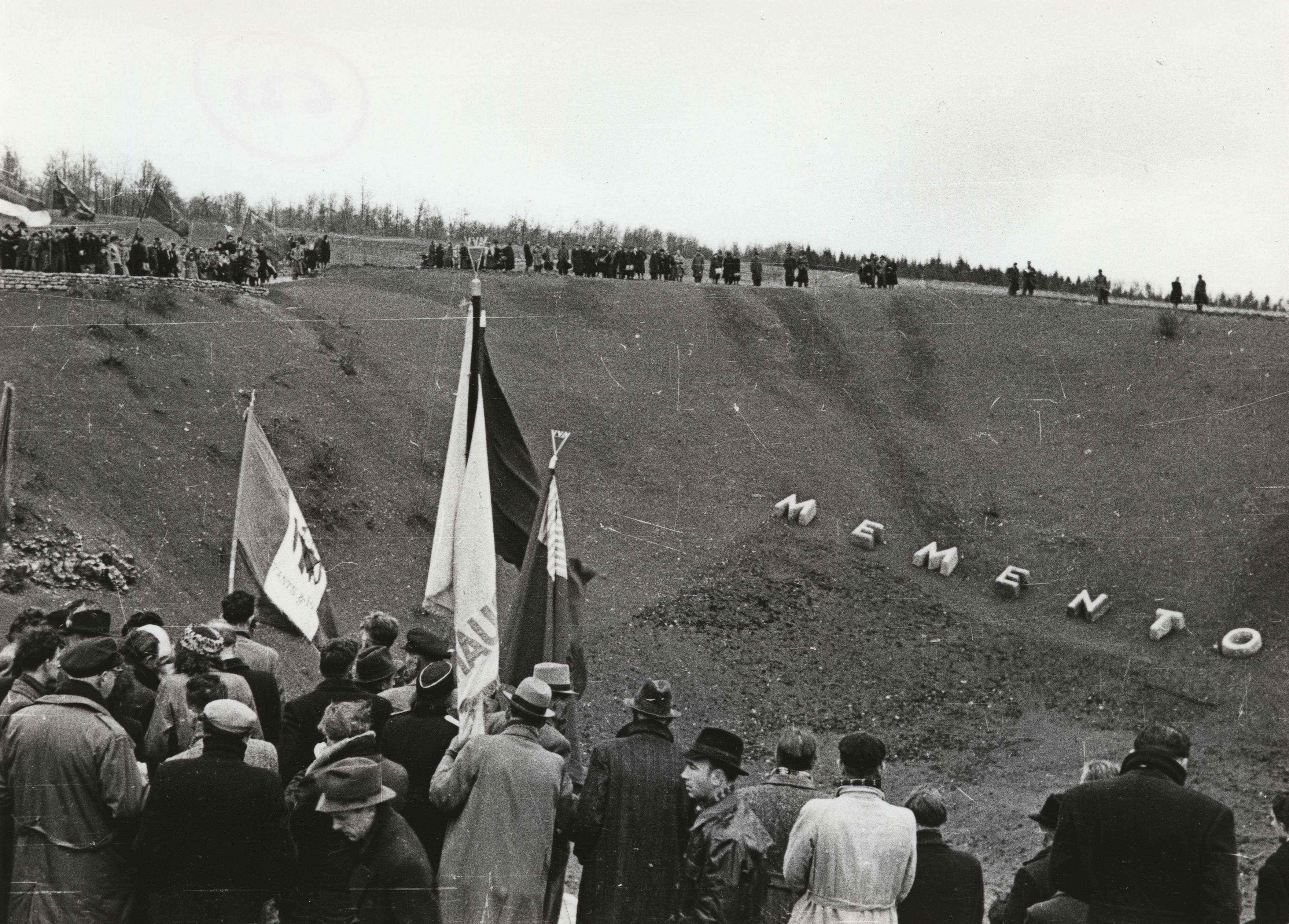#otd1945.06.20
Commemoration
On 20 June 1945, a ceremonial burial took place near the Bismarck Tower on the south slope of the Ettersberg. It consisted in the burial of 1,286 urns containing the ashes of inmates who had died in the Buchenwald concentration camp. Not only camp survivors, but also residents of the surrounding villages attended the event. U.S. Army clerics conducted the ecumenical service.
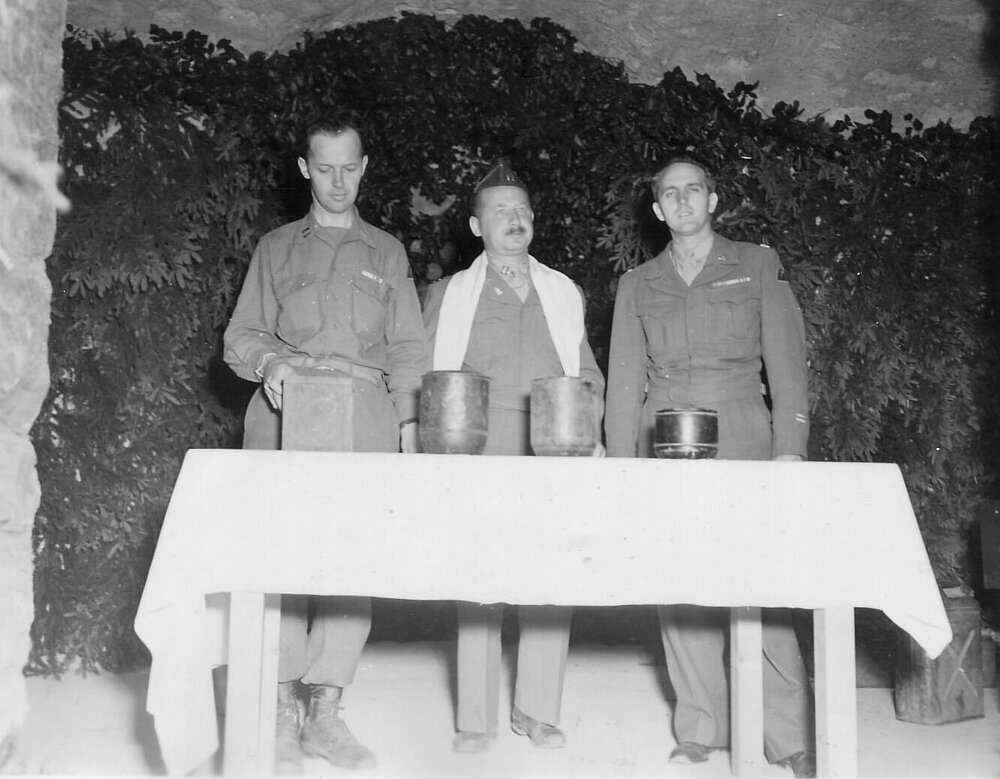
Photo: George A. Haynia (U.S. Army Signal Corps) (National Archives Washington)
The Bismarck Tower had been dedicated in 1901 and was considered a tourist attraction until 1939. In early 1945, the SS took possession of the building and used its cellar rooms to store crematory urns. When fuel shortages prevented the further operation of the crematorium in early March, the SS had the camp dead buried in natural depressions to the south of the tower. At the time of the liberation, 2,900 dead lay buried in the four sinkholes.
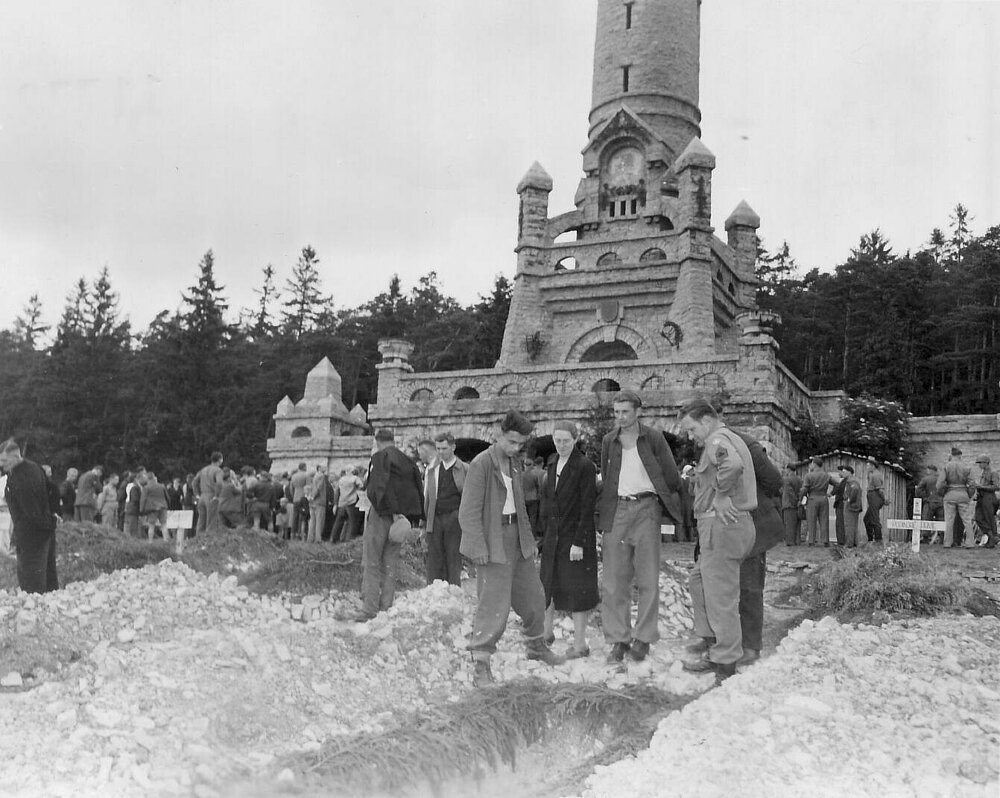
Photo: George A. Haynia (U.S. Army Signal Corps) (National Archives Washington)
In April 1945, a cemetery was created downhill from the Bismarck Tower. Former inmates who had died after the liberation of the Buchenwald concentration camp and deceased Polish forced labourers from the Buchenwald DP Camp were buried there in graves arranged in rows. The graves were numbered and marked with crosses or Stars of David. Only four further burials took place after 20 June 1945, the final one on 10 July of that year, a week after the Red Army had taken control of the liberated camp.
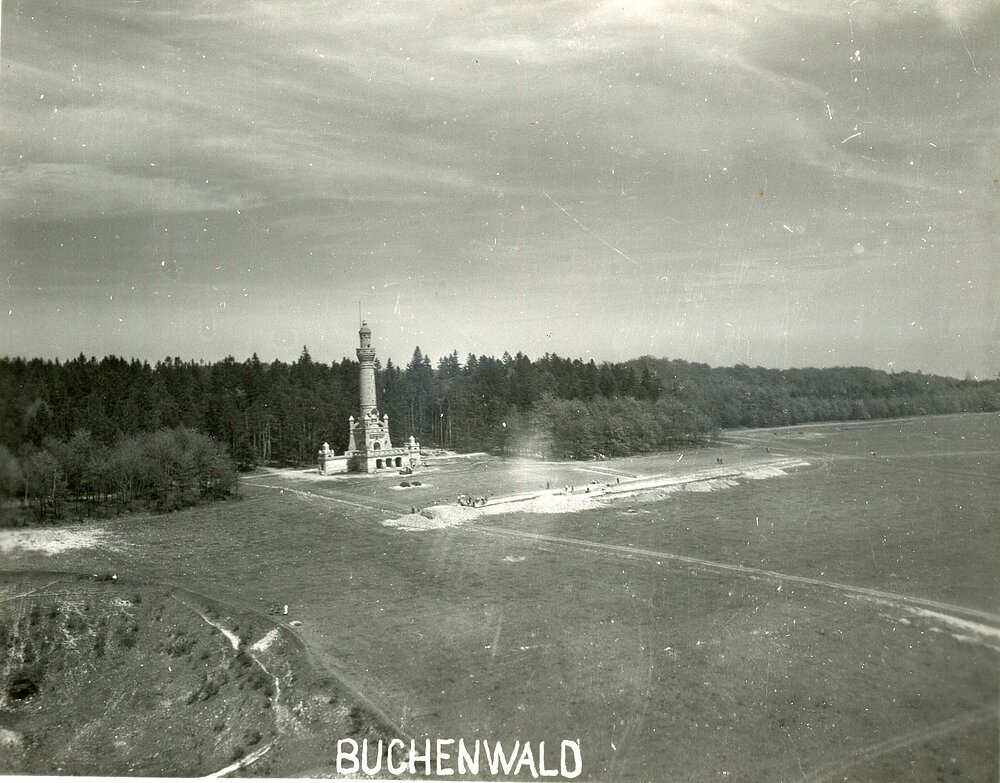
Photo: Duane Esper (306th Bomb Group Historical Association)
Over the subsequent years, the grave markings were lost, as was all knowledge about the identities of the persons buried and the precise locations of the graves. There were repeated complaints about the cemetery’s ill-kempt and neglected state. At the same time, plans got underway for a memorial to the dead of the Buchenwald concentration camp. In May 1949, the Bismarck Tower was demolished by means of controlled blasting. The same year, the cemetery was converted into a Grove of Honour for the nameless dead. Later the rows of graves were integrated into the Buchenwald Memorial of the German Democratic Republic. It was not until the 1990s that the names and burial sites of 400 dead could be reconstructed and marked accordingly.
The cemetery at Bismarck Tower is a representative example of the early commemoration of concentration camp victims. Such acts were usually carried out at graves located on or near the former camp grounds or at the sites of death marches. One of the first commemorative markers for the dead of the Mittelbau-Dora concentration camp was dedicated at the Münchehof cemetery in Seesen, Lower Saxony in September 1945. There a gravestone pays tribute to 23 inmates who died during a Mittelbau-Dora clearance transport in early April 1945. The commemorative stone in Münchehof likewise fell into oblivion, not to be rediscovered until the late 1990s. Since then, a memorial service has taken place there every year.
(Gwendoline Cicottini)
References:
Harry Stein, “Der Friedhof am Bismarckturm”, Weimar-Kultur-Journal, no. 4/1996, pp. 28f.
Volkhard Knigge (ed.), Versteinertes Gedenken: Das Buchenwalder Mahnmal von 1958, Spröda 1997.
Jens-Christian Wagner, “Das ‘Schlandʼ-Mal von Münchehof: Ein aussergewöhnliches Denkmal für NS-Opfer”, Zeitschrift für Museum und Bildung 84–85 (2018), pp. 132–37.

